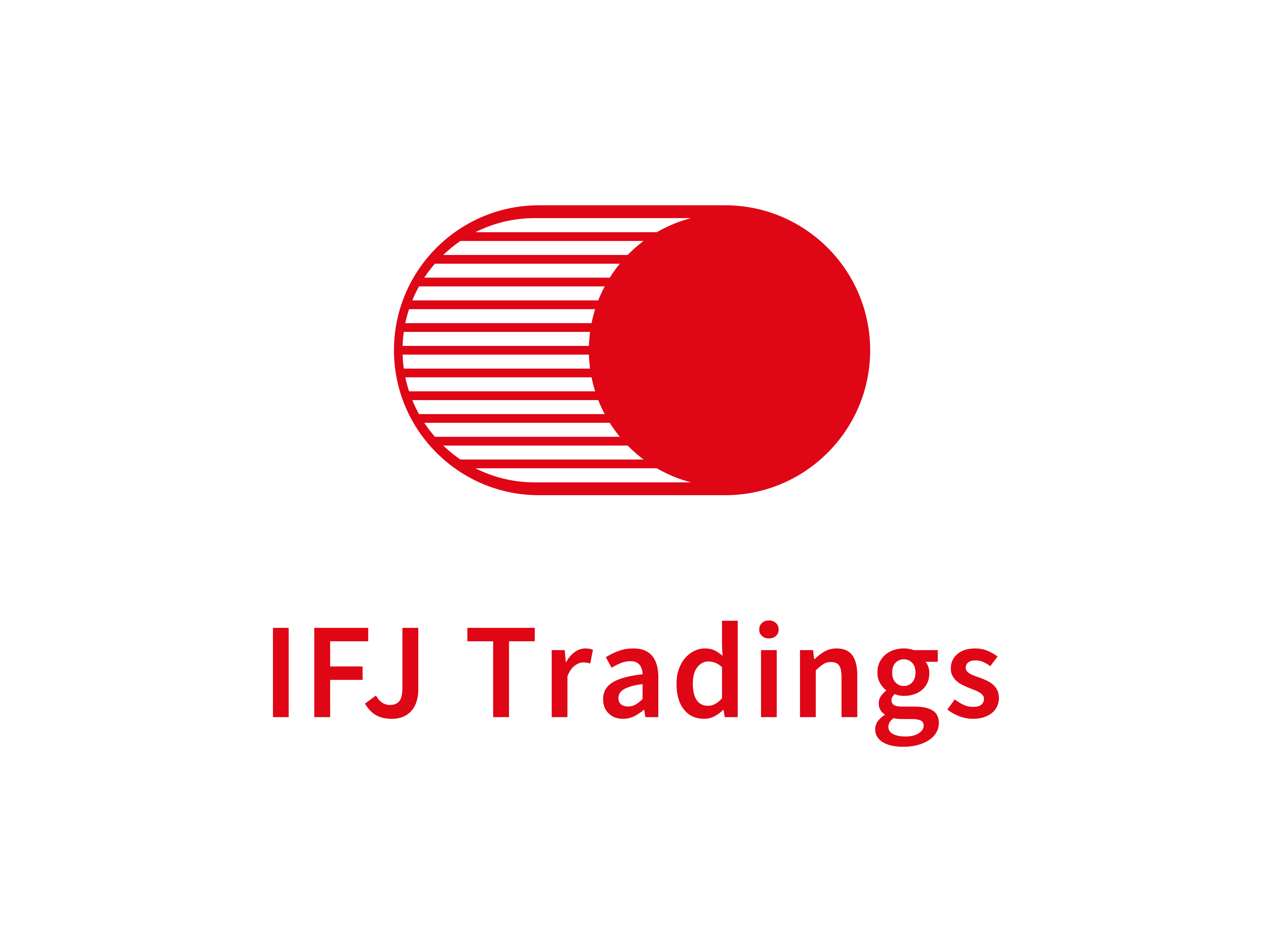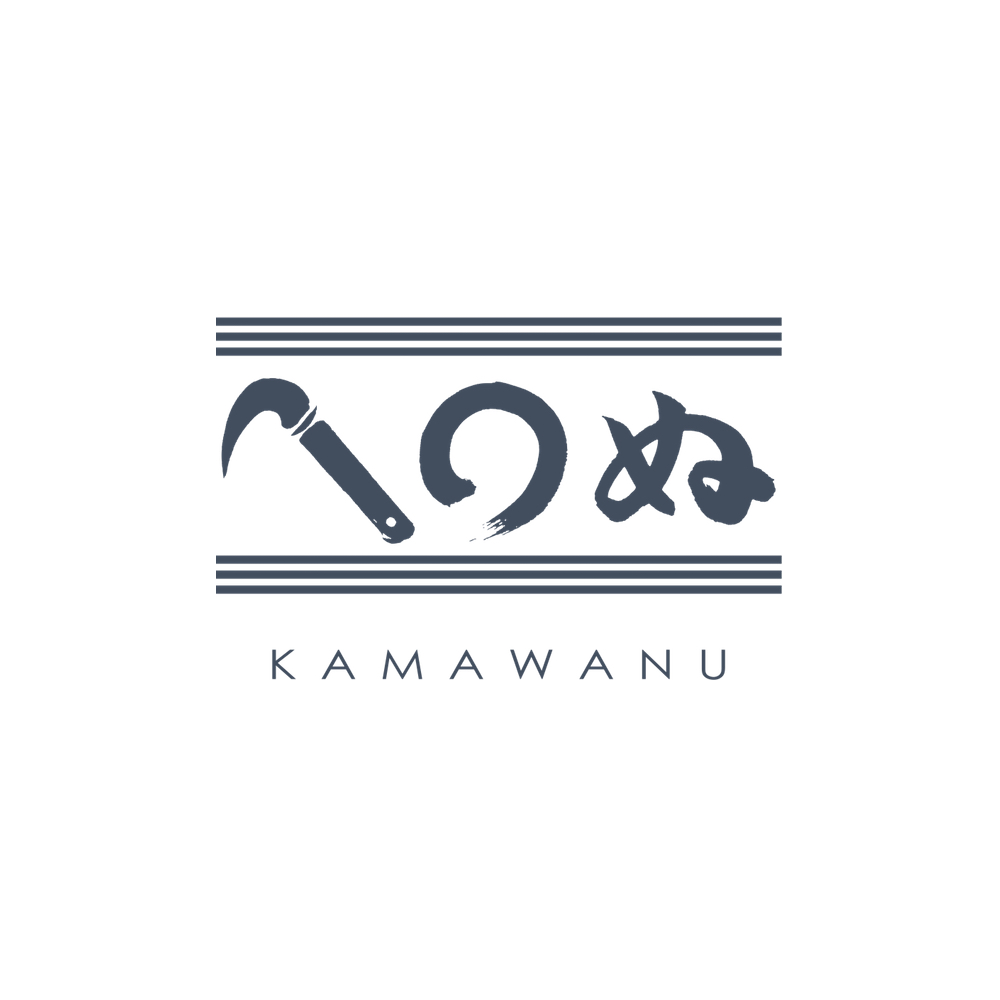KAMAWANU specializes in making TENUGUI, a hand-dyed rectangular cloth traditionally used in Japan as functional everyday housewares/garments. The TENUGUI is made using the "CHUSEN" hand-dyeing technique, which dates back to the Meiji Period over 100 years ago. Since its establishment in 1987, KAMAWANU has developed more than 500 different TENUGUI patterns, thus bringing new life to the "CHUSEN" hand-dyeing tradition, including the training of apprentice "CHUSEN" craftspeople.
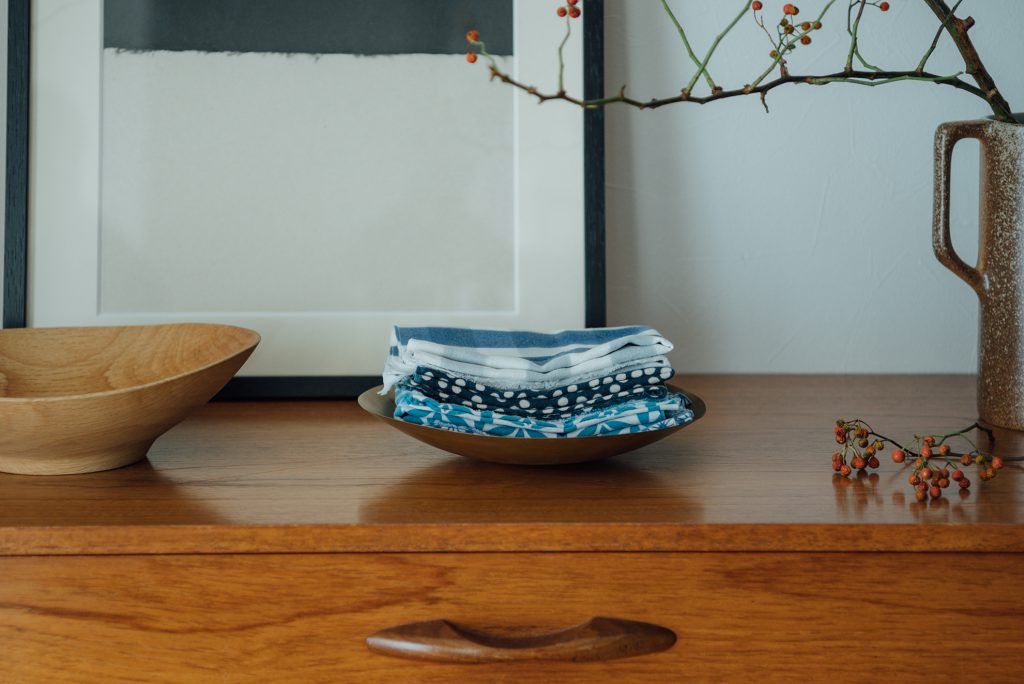 HOW TENUGUI ARE MADE
History of TENUGUI
HOW TENUGUI ARE MADE
History of TENUGUI
In the Heian period (AD 794 - 1192), TENUGUI was used as an accessory for Shinto rituals. Cloth was such a precious item that its use was not widespread among the people during the Nara period (710 - 794). From the Kamakura period (1192 - 1333) onwards, its popularity gradually increased. In the Edo period (1592 - 1868), cotton cultivation began in various parts of Japan, and TENUGUI became a necessary item for daily living. Around this time, people started to regard TENUGUI as a valuable item not only for its functionality but also for its artistic value. A contest called "TENUGUI-AWASE" became a widespread event among a certain group of people who aimed to win with their original designs on TENUGUI.
Such competitions contributed to the development of new dyeing techniques. In the Meiji era (1868 - 1912), a dyeing technique called "Chusen" was devised, revolutionizing the industry extensively. In and around the Showa period (1926 - 1989), various associations were formed by people who loved TENUGUI, and these associations spread throughout the country, elevating TENUGUI to a status beyond daily necessities. Today, there is a wide variety of colors and patterns for TENUGUI, and people have the freedom to use them in both creative and practical ways. It is cherished by those who value its refined textures and visual qualities.
KAMAWANU's TENUGUI
The "CHUSEN" dyeing technique has been in use since the Meiji period, and KAMAWANU's craftsmen have been making KAMAWANU's TENUGUI in large volumes using this technique. The TENUGUI is a bleached cotton cloth that is approximately 34 cm wide and 90 cm long. Dyes produce various shades of colors depending upon the day's weather, temperature, and humidity, and the colors of the dyed TENUGUI will inevitably fade away over time.
However, with each wash, the cloth will become softer, allowing you to fully appreciate its unique texture. This is the distinctive quality of the "CHUSEN dyeing" technique, defying competition with other techniques. Because the TENUGUI is dyed by hand, all products may not be shaped exactly the same and the dyes may come out uneven. Nevertheless, it would be our great pleasure if you could enjoy the hand-made TENUGUI for its unique texture and appearance.
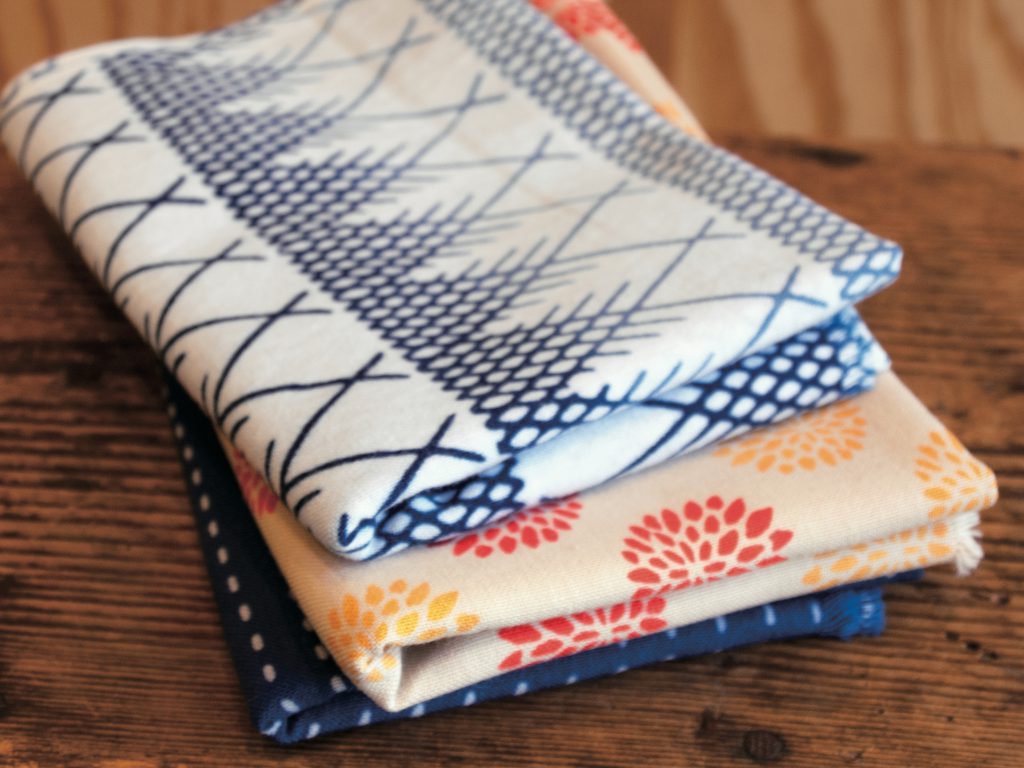 Notes
Notes
Because both ends of TENUGUI are simply cut off and left alone, not hemmed, slight fraying is to be expected with use. Initially, the weft threads become frayed, but then you can cut these threads. As you continue to use and wash the TENUGUI, both ends will develop one-centimeter fringes, and the weft threads will no longer fray. The bleached seamless cotton cloth stays clean because it will dry easily and attract no dust. In a hot and humid country like Japan, it is only natural to have such TENUGUI available.
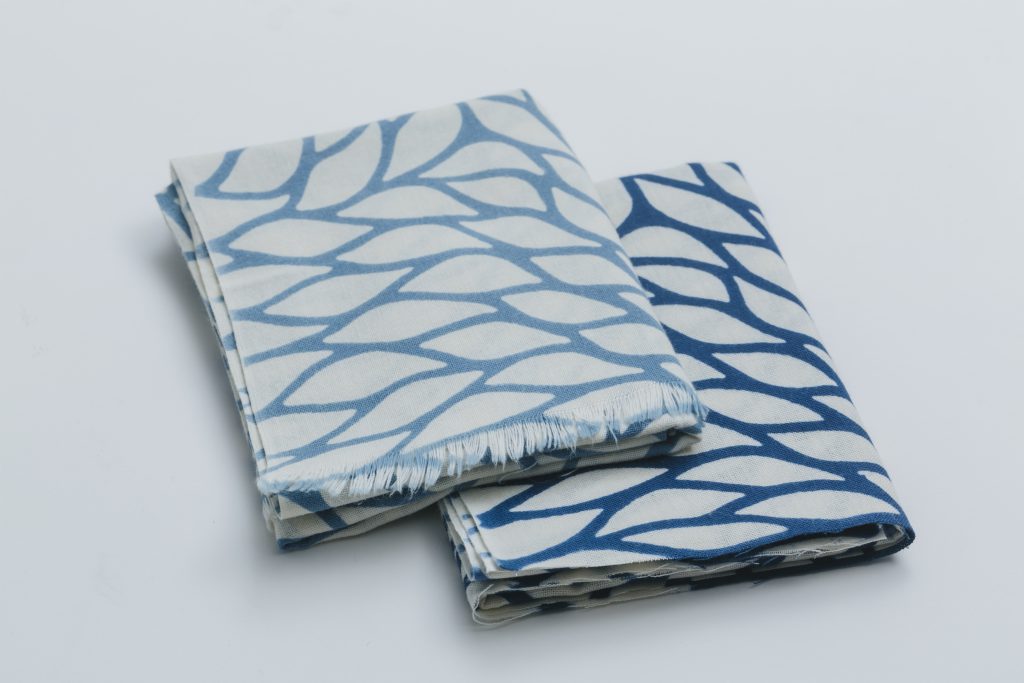
In the KAMAWANU product series, aside from TENUGUI, the edges of Table Runners are not hemmed, whereas Cocktail Napkins and FUROSHIKI have hemmed edges.
